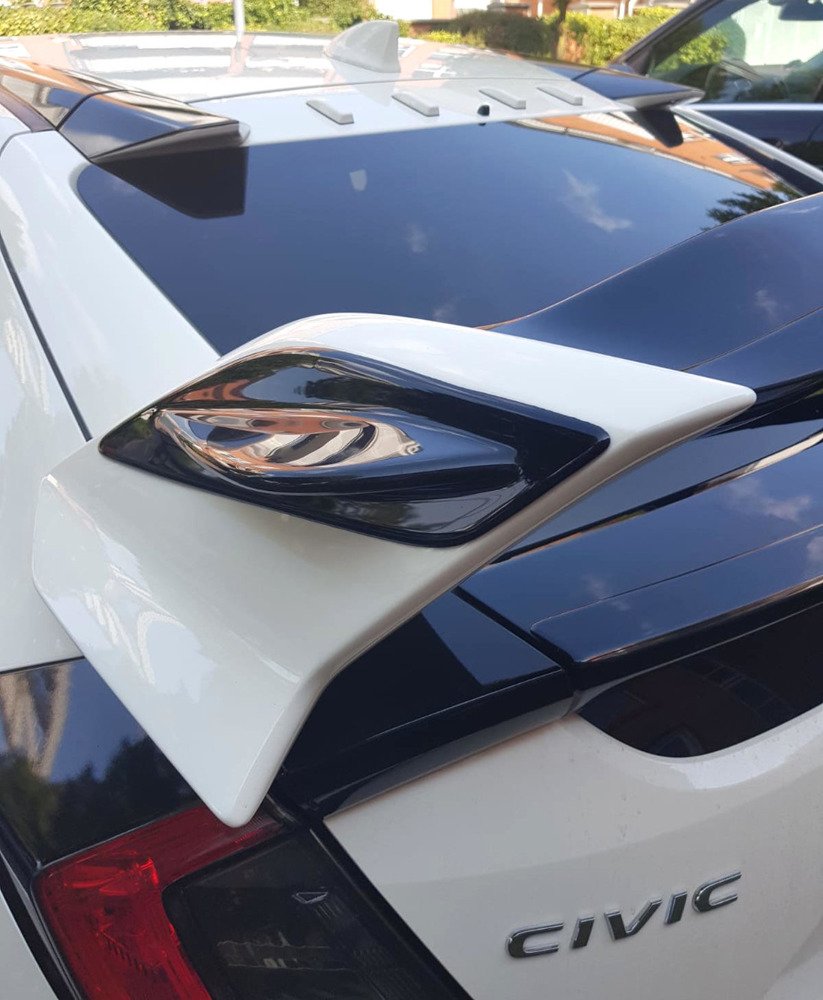

Function wins out over form in this round. Gone are the old Type R's fake vents and bodywork creases to nowhere. It technically works but could be quicker to respond, something more noticeable on the track than on the street. For those who want Honda to do it, there's a retuned automatic rev-matching program. A lighter flywheel makes the throttle slightly more alert than before, and a mere tap of the right pedal spins up the engine to match revs on downshifts. In more than 500 miles of abusively fast shifts, we never heard a crunch from the synchros as we upshifted just shy of the 7000-rpm redline. Light, direct, precise, and a joy to operate, the Type R's mostly carries over from its predecessor and has the same tight throws and positive action. Get it right and you'll move all 3183 pounds of Civic to 60 in 4.9 seconds, with the quarter falling in 13.5 seconds at 106 mph. The solution is to keep the wheels pointed straight in first. Turn the wheel slightly while hitting the gas in first and the front end eagerly hunts for the ditch or the oncoming lane as the differential tries to make the most of available grip. Boost arrives after a beat or two, but the torque surge at about 3000 rpm-310 pound-feet, available from 2600 to 4000 rpm-will have you on the phone to Tire Rack. Here, it's hooking up as in launching hard from a stop. It makes no sense that a front-driver can do this, so let's just add it to the list of things that don't make sense in 2022. As if some invisible string is holding the car, keeping it from leaving the road. That unit, coupled with a very crafty anti-torque-steer front strut, puts the engine's power to the Michelin Pilot Sport 4S tires and allows you to empty the 2.0-liter's magazine without widening the cornering line.

Corner exits, which usually require the patience of Job in a front-wheel-drive car, are masterfully orchestrated by the Type R’s limited-slip differential. This likely required changes to the Civic Type R's unique torque-steer-mitigating front suspension geometry.Go ahead and dive into an apex, because the steering is a mere 2.1 turns lock to lock and the Type R slips in without any drama. The wheel and tire setup is quite different than before, with the previous car's 245/30 Continental SportContact 6 tires and 20-inch wheels replaced by 265/30 Michelin Pilot Sport 4S tires and 19-inch wheels. The car rides on an updated version of the 10th-gen Civic platform, and it's a good one, likely providing a great basis for a Type R model. Still, it's not impossible to glean mechanical details from the photos and from what we know about the current, 11th-gen Civic. The press release also reminds us that the new CTR lapped Suzuka faster than its predecessor, setting a front-wheel drive production-car record. The brand simply states that the new CTR will use a more powerful version of the 2.0-liter turbo four-cylinder found in the previous model-where it made 306 hp and 295 lb-ft of torque-and an updated six-speed manual.


Honda is only revealing the exterior and interior design for now. Honda has teased the 2023 Civic Type R for months, and an image of it leaked last week, but now, it's finally here.


 0 kommentar(er)
0 kommentar(er)
